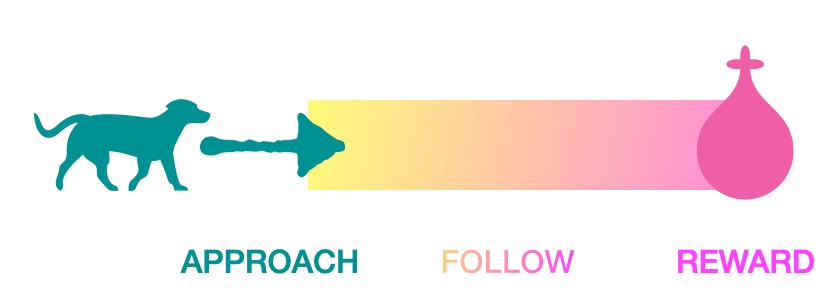core workbook ONLINE
Build the Learning
Build memories of success.
£75
➤ Choose WHAT they learn, HOW this is likely to happen and WHEN it will occur.
➤ Develop strength, fluency and adaptability.
➤ Explore the options to build a behaviour and develop the skills to confidently let your learner find solutions.
Teach it once. Teach it well.
Follow the material step-by-step, or dip in and out. You have lifetime access, for all the dogs in your future.
Content
Our choices fall within 3 categories:
Adding value to existing actions
Much of what we are seeking to develop may already occur for that individual. Most dogs plant their backsides for different reasons. By adding additional value to that action we can build the likely occurrence of the action under specific conditions. Through observation we look for the conditions or stimulus that trigger that response and add our own reward predicting stimulus as well.
A puppy will naturally choose to eliminate outside its sleeping area – we give additional rewards and a verbal cue for that process and can develop that natural instinct to encompass all indoors space and elimination to occur in specific outdoors spaces under certain conditions.
If the action or movement is already occurring, by adding extra reward value when it happens, we can increase the frequency of it happening and add a usable cue or signal.
Care should be taken that the natural or existing form, which may be in a raw state, may need refining or shaping for future use. The sitting action may contain puppy sloppiness unsuitable for working tasks.
Another example is the puppy instinct to chase, carry and fetch. It is likely to need attentive shaping to avoid juvenile actions becoming part of the future.
Beginning with the natural occurring action will bring a core reward and intrinsic pleasure for the dog which builds a strong future to the shaped result.
Approach and reward
By definition a reward can come from any stimulus, event, action, object, or situation. A reward contains three elements for practical use:
- It is considered a reward by the dog
- It compliments the behaviour, movement or action and does not put the dog into conflict
- It is comfortable to be used by the person, or engineer.
When a reward is presented the dog will display approach behaviour as an indication that they desire this reward and it presents potential pleasure for them. If approach is not evident there should be a change in reward.


FAQs







